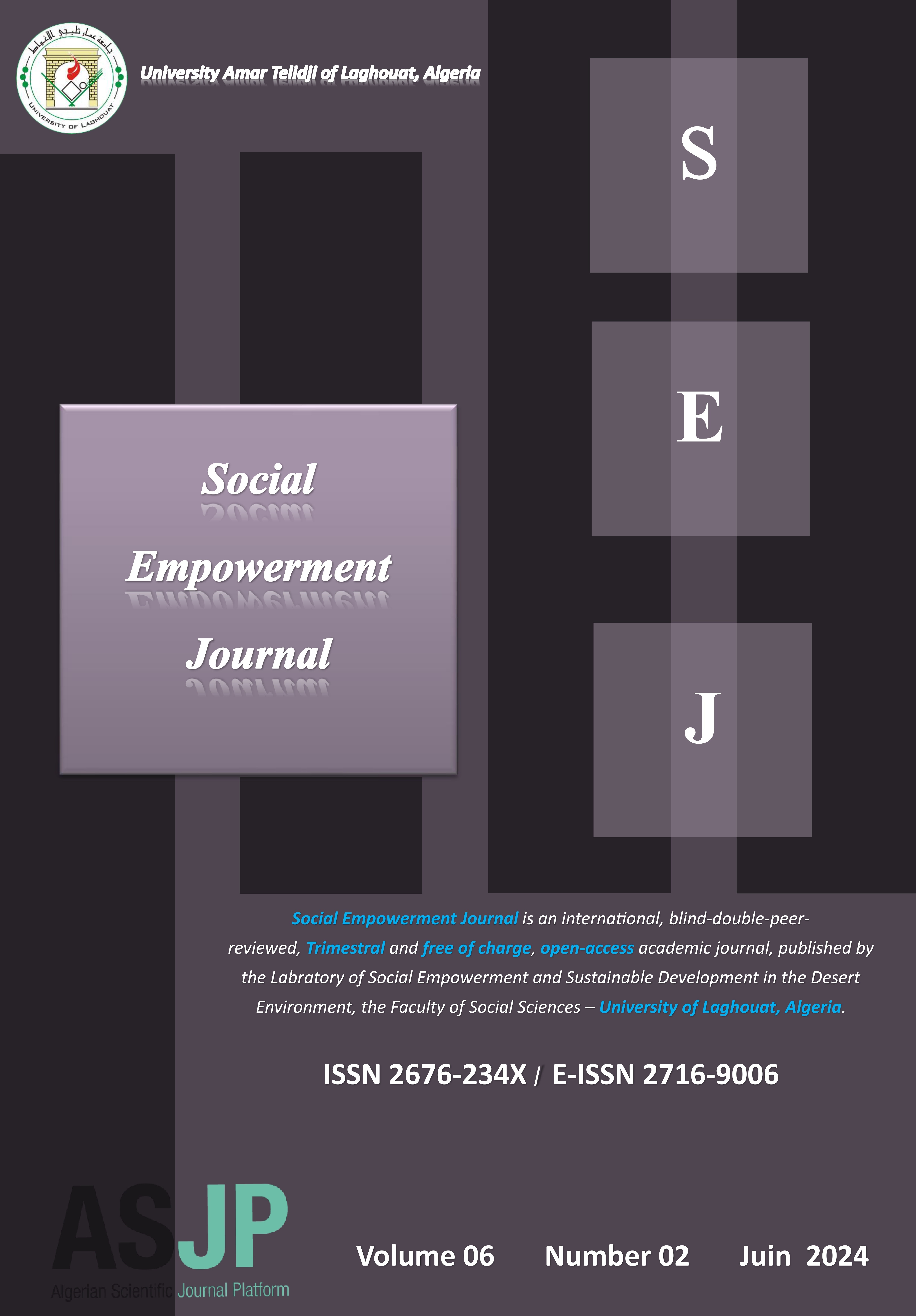Algerian Clothing Culture in Travel Books (19th- 20th century)
Abstract
This research paper explores the scope of Algerian cultural manifestations featured in three travel books, at the last third of the nineteenth century and outset of the twentieth century, shedding light on a specific one, which is traditional clothing. The aim is to project the diversity of Algerian fashion and the specificity that characterised some parts of the country, in terms of costumes and styles, including inter alia, those for special events and festivities. Moreover, to identify the significance of traditional clothing in the Algerian society at that time frame, reiterating the importance of travel literature in its documentation. This examination involves some books of that era, especially chosen for discussion and citation. By shedding light on detailed accounts and narratives that provide an insight into Algeria’s cultural prosperity, this paper delves into the characteristics of clothing such as styles, colours, fabrics existed within the specified timeframe (end of 19th- onset of 20th century). The paper is grounded in relevant works published at the time Algeria had been witnessing a turnout of Western intellectuals and artists, particularly from Europe. The three books are: A Woman in the Sahara, by Gordon Helen Cameron, 1914; Winters in Algeria, by F. A. Bridgman, (1890); Murrays Handbook for Travellers in Algeria and Tunis, by Sir R. Lambert Playfair, (1891). Following a roadmap to explore the cultural manifestation through the Algerian traditional clothing, this paper maps out places marked by a popularity of certain essential garments worn by men and women, in terms of where and how they were worn. The paper also includes detailed descriptions of different styles of clothing, summarized and cited from the mentioned works. Hence, the paper concludes the remarkability of the Algerian traditional clothing and its significance in daily life or on special occassions. Additionally, it identifies the status of the Algerian clothing in society with its diverse ethnicities.
Downloads
References
Bennoune, M. (1988). The Making of Contemporary Algeria, 1830-1987. Great Britain. Cambridge University Press.
Bridgman, F.A. (1890). Winters in Algeria. New York, Harper & Brothers, Franklin Square.
Cameron, H. G. (1914). A Woman in the Sahara. Fantasia, Frederick, A. Stokes. New York.
Cramoisy, S. (1663). Femme Maure D’Alger en Barbarie, Histoire Generale Des Turcs. Contenant L’histoire de Chalcondyle. Paris, Rue St Jacques aux Cicognes. Imprimeur et Librairie ordinaire Dy Roy.
Haedo, D. D. (1578- 1581). Topographia Ehisto. Ria Generale De Argel.
Playfair, R. L. 1891. Murrays Handbook for Travellers in Algeria and Tunis. London, Albemarle Street. John Murray.
Hannoum, A. (2010). Writing Algeria : On the History and Culture of Colonialism. The Maghreb Center Journal, Issue 1, Spring/Summer.
Bridgman, F. Frederick Arthur Bridgman. Retrieved May 28, 2024, fromhttps://2u.pw/mpcxisMB
Webster, M. (2024). Retrieved June 10, 2024, from: https://2u.pw/TWTxiXSX
Webster, M. (2024). Retrieved June 10, 2024, from: https://2u.pw/NjgyoMF0
Webster, M. (2024). Retrieved June 10, 2024, from : https://2u.pw/a1uXTr2s

This work is licensed under a Creative Commons Attribution-NonCommercial 4.0 International License.









